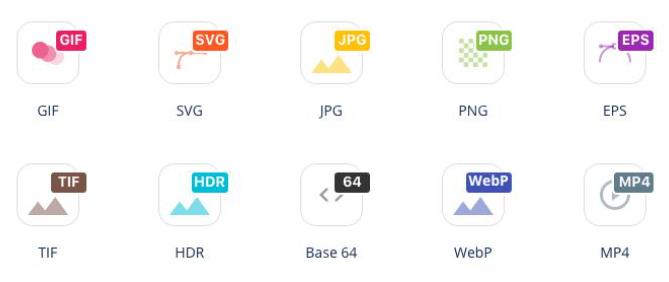C++中图片类型的识别以及各图片类型之间的转换
Posted IT老张
tags:
篇首语:本文由小常识网(cha138.com)小编为大家整理,主要介绍了C++中图片类型的识别以及各图片类型之间的转换相关的知识,希望对你有一定的参考价值。
目录
1.6、使用CreateFile和ReadFile API函数读取内容
本文简单的介绍一下C++语言中如何识别图片文件的类型,以及各图片类型之间的转换方法,并提供相关的源码供大家参考。
1、图片类型的识别
一般情况下,不同类型的图片文件都会有其对应的后缀名,比如.jpg、.bmp、.png等。但仅仅通过后缀名,是没法判别文件是不是图片以及图片文件真实类型,必须通过文件内容的起始标记字段才能判断出来。

每种图片文件的类型标识字段存储于文件内容开始的几个字节,读出这几个字节就能判断出图片类型了。下面给出常见的图片类型的判断代码。
以下代码都是调用_tfopen(支持Unicode)打开文件,调用fread读出文件中的类型标记数据。注意,打开文件时必须设置 b - 二进制参数,如果不设置,调用fread时可能读不出指定字节数的内容!
1.1、bmp图片
BOOL32 IsBmpFile( LPCTSTR lpStrFilePath )
{
FILE* pFile = _tfopen( lpStrFilePath, _T("rb") );
if ( pFile == NULL )
{
return FALSE;
}
char szData[2] = {0};
int nReadNum = fread( szData, sizeof(char), 2, pFile );
if ( nReadNum < 2 )
{
fclose( pFile );
return FALSE;
}
fclose( pFile );
// bmp: 0x42, 0x4d
unsigned char szBmpFlag = { 0x42, 0x4d };
if ( !memcmp( szBmpFlag, szData, 2 ) )
{
return TRUE;
}
return FALSE;
}1.2、jpg图片
BOOL32 IsJpgFile( LPCTSTR lpStrFilePath )
{
FILE* pFile = _tfopen( lpStrFilePath, _T("rb") );
if ( pFile == NULL )
{
return FALSE;
}
char szData[2] = {0};
int nReadNum = fread( szData, sizeof(char), 2, pFile );
if ( nReadNum < 2 )
{
fclose( pFile );
return FALSE;
}
fclose( pFile );
// jpg: 0xFF, 0xD8
unsigned char szJpgFlag[] = { 0xFF, 0xD8 };
if ( !memcmp( szJpgFlag, szData, 2 ) )
{
return TRUE;
}
return FALSE;
}1.3、png图片
BOOL32 IsPngFile( LPCTSTR lpStrFilePath )
{
FILE* pFile = _tfopen( lpStrFilePath, _T("rb") );
if ( pFile == NULL )
{
return FALSE;
}
char szData[8] = {0};
int nReadNum = fread( szData, sizeof(char), 8, pFile );
if ( nReadNum < 8 )
{
fclose( pFile );
return FALSE;
}
fclose( pFile );
// png: 0x89, 0x50, 0x4E, 0x47, 0x0D, 0x0A, 0x1A, 0x0A
unsigned char szPngFlag[] = { 0x89, 0x50, 0x4E, 0x47, 0x0D, 0x0A, 0x1A, 0x0A };
if ( !memcmp( szPngFlag, szData, 8 ) )
{
return TRUE;
}
return FALSE;
}1.4、gif图片
BOOL32 IsGifFile( LPCTSTR lpStrFilePath )
{
FILE* pFile = _tfopen( lpStrFilePath, _T("rb") );
if ( pFile == NULL )
{
return FALSE;
}
char szData[6+1] = {0};
int nReadNum = fread( szData, sizeof(char), 6, pFile );
if ( nReadNum < 6 )
{
fclose( pFile );
return FALSE;
}
fclose(pFile);
// 使用字符串判断更直观
if ( strcmp( szData, "GIF89a" ) == 0 || strcmp( szData, "GIF87a" ) == 0 )
{
return TRUE;
}
return FALSE;
}1.5、tiff图片
BOOL32 IsTiffFile( LPCTSTR lpStrFilePath )
{
FILE* pFile = _tfopen( lpStrFilePath, _T("rb") );
if ( pFile == NULL )
{
return FALSE;
}
char szData[4] = {0};
int nReadNum = fread( szData, sizeof(char), 4, pFile );
if ( nReadNum < 4 )
{
fclose( pFile );
return FALSE;
}
fclose( pFile );
// jpg: 0x49, 0x49, 0x2A, 0x00
unsigned char szTiffFlag[] = { 0x49, 0x49, 0x2A, 0x00 };
if ( !memcmp( szTiffFlag, szData, 2 ) )
{
return TRUE;
}
return FALSE;
}1.6、使用CreateFile和ReadFile API函数读取内容
上面是使用fopen和fread读取文件中的内容的,下面给出调用CreateFile和ReadFile API函数实现的代码:
BOOL32 IsJpgFile( LPCTSTR lpStrFilePath )
{
HANDLE hFile = ::CreateFile(lpStrFilePath, GENERIC_READ, FILE_SHARE_READ, NULL,
OPEN_EXISTING, FILE_ATTRIBUTE_NORMAL, NULL);
if (hFile == INVALID_HANDLE_VALUE)
{
return FALSE;
}
unsigned char szData[4] = { 0 };
DWORD dwReadNum;
if (!::ReadFile((HANDLE)hFile, szData, 4, &dwReadNum, NULL))
{
CloseHandle(hFile);
return FALSE;
}
if ( dwReadNum< 4 )
{
CloseHandle(hFile);
return FALSE;
}
CloseHandle(hFile);
unsigned char szJpgFlag[] = { 0xFF, 0xD8 };
// 0xFF,0xD8
if ( !memcmp( szJpgFlag, szData, 2 ) )
{
return TRUE;
}
return FALSE;
}2、图片之间的相互转换
有时我们需要进行不同图片类型之间的相互转换,比如将占用较大存储空间的bmp图片转换成jpg或者png图片。可以选择使用GDI+类实现不同图片类型之间的转换。在使用GDI+之前,要先初始化GDI+库:
ULONG_PTR m_gdiplusToken;
Gdiplus::GdiplusStartupInput gdiplusStartupInput;
Gdiplus::GdiplusStartup( &m_gdiplusToken, &gdiplusStartupInput, NULL );在退出程序时,要关闭GDI+库:
Gdiplus::GdiplusShutdown( m_gdiplusToken );实现图片类型之间相互转换的代码如下:
// 根据目标文件的后缀确定要转换成的目标文件类型
BOOL32 SaveImgFileToAnotherType( const CString& strSrcFile, const CString& strDstFile )
{
// 使用CImage实现不同格式图片文件的转换
if ( strDstFile.IsEmpty() )
{
return FALSE;
}
CImage img;
HRESULT hResult = img.Load( strSrcFile ); // 加载源图片文件
if ( hResult != S_OK )
{
return FALSE;
}
GUID guidFileType = Gdiplus::ImageFormatPNG; // 默认保存为png图片
CString strExt;
s32 nIndex = strDstFile.ReverseFind( _T('.') );
if ( nIndex != -1 )
{
strExt = strDstFile.Right( strDstFile.GetLength() - nIndex - 1 );
if ( strExt == _T("png") )
{
guidFileType = Gdiplus::ImageFormatPNG;
}
else if ( strExt == _T("jpg"))
{
guidFileType = Gdiplus::ImageFormatJPEG;
}
else if ( strExt == _T("bmp") )
{
guidFileType = Gdiplus::ImageFormatBMP;
}
else if ( strExt == _T("gif") )
{
guidFileType = Gdiplus::ImageFormatGIF;
}
else
{
guidFileType = Gdiplus::ImageFormatPNG;
}
}
hResult = img.Save( strDstFile, guidFileType ); // 保存为目标文件
if ( hResult != S_OK )
{
return FALSE;
}
return TRUE;
}以上是关于C++中图片类型的识别以及各图片类型之间的转换的主要内容,如果未能解决你的问题,请参考以下文章